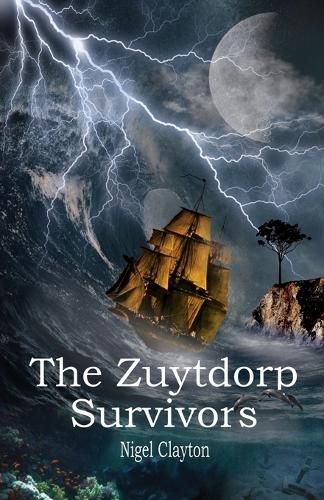Readings Newsletter
Become a Readings Member to make your shopping experience even easier.
Sign in or sign up for free!
You’re not far away from qualifying for FREE standard shipping within Australia
You’ve qualified for FREE standard shipping within Australia
The cart is loading…






This title is printed to order. This book may have been self-published. If so, we cannot guarantee the quality of the content. In the main most books will have gone through the editing process however some may not. We therefore suggest that you be aware of this before ordering this book. If in doubt check either the author or publisher’s details as we are unable to accept any returns unless they are faulty. Please contact us if you have any questions.
It was a great monopoly and stretched from Holland to Asia - namely Batavia (Jakarta), where the Dutch United East India Company (VOC) headquarters was established - and the surrounding countries, a source of great wealth, provided access to copper, tin, spices, opium and dyes, these being some of the basic requisites of commerce.
From the Cape of Good Hope to Batavia the ships would travel due west for one thousand Dutch miles before turning north, there being no means by which to accurately determine longitude at sea: This becomes the accepted method of voyage, to seek the sight of land and then head north towards the coast of Sumatra. For almost a hundred years some were lucky enough to cast their eyes upon a great mass of land, thought to have been a part of New Guinea.
The Zuytdorp departs the Cape of Good Hope, Table Bay, with the ship Kockenge. She pulls ahead of the Kockenge due to her being a much larger and faster vessel. The captain sails until sighting land before turning north for Batavia, making full benefit of the winds. But catastrophe is all they meet, no success in voyage to be celebrated. The Zuytdorp is shipwrecked.
There is evidence to show that Aboriginals of the Shark Bay area suffer from Porphyria Variegate, a gene mutation that is traceable to the Dutch. It is uncommon and rare, and there is no reason, other than the coupling of an Aboriginal with a survivor of the Zuytdorp, that currently explains the disease being discovered in Australian Aboriginals of WA. I do not declare this to be fact nor fiction: take it as you will.
$9.00 standard shipping within Australia
FREE standard shipping within Australia for orders over $100.00
Express & International shipping calculated at checkout
This title is printed to order. This book may have been self-published. If so, we cannot guarantee the quality of the content. In the main most books will have gone through the editing process however some may not. We therefore suggest that you be aware of this before ordering this book. If in doubt check either the author or publisher’s details as we are unable to accept any returns unless they are faulty. Please contact us if you have any questions.
It was a great monopoly and stretched from Holland to Asia - namely Batavia (Jakarta), where the Dutch United East India Company (VOC) headquarters was established - and the surrounding countries, a source of great wealth, provided access to copper, tin, spices, opium and dyes, these being some of the basic requisites of commerce.
From the Cape of Good Hope to Batavia the ships would travel due west for one thousand Dutch miles before turning north, there being no means by which to accurately determine longitude at sea: This becomes the accepted method of voyage, to seek the sight of land and then head north towards the coast of Sumatra. For almost a hundred years some were lucky enough to cast their eyes upon a great mass of land, thought to have been a part of New Guinea.
The Zuytdorp departs the Cape of Good Hope, Table Bay, with the ship Kockenge. She pulls ahead of the Kockenge due to her being a much larger and faster vessel. The captain sails until sighting land before turning north for Batavia, making full benefit of the winds. But catastrophe is all they meet, no success in voyage to be celebrated. The Zuytdorp is shipwrecked.
There is evidence to show that Aboriginals of the Shark Bay area suffer from Porphyria Variegate, a gene mutation that is traceable to the Dutch. It is uncommon and rare, and there is no reason, other than the coupling of an Aboriginal with a survivor of the Zuytdorp, that currently explains the disease being discovered in Australian Aboriginals of WA. I do not declare this to be fact nor fiction: take it as you will.